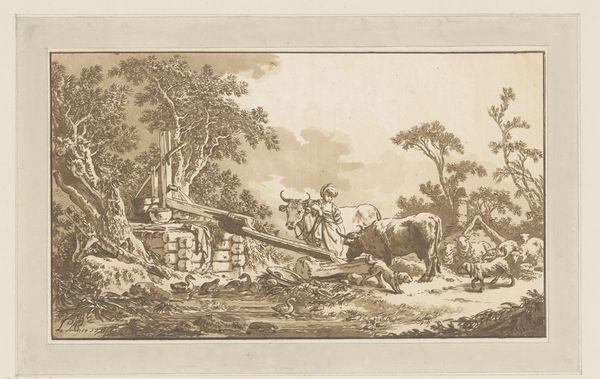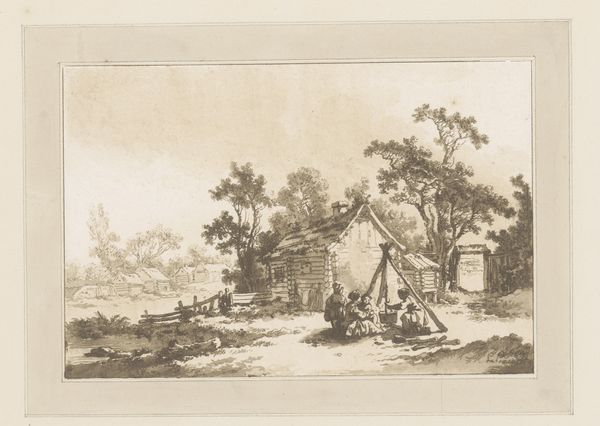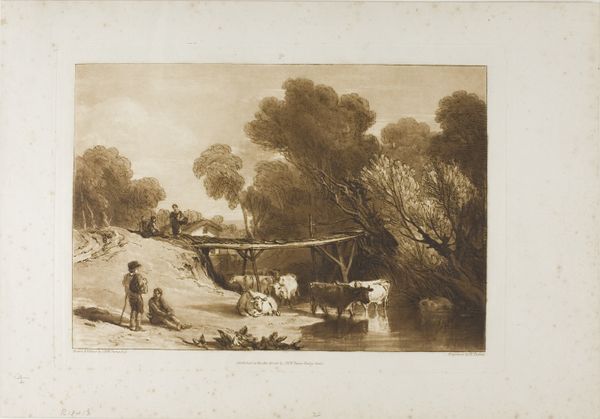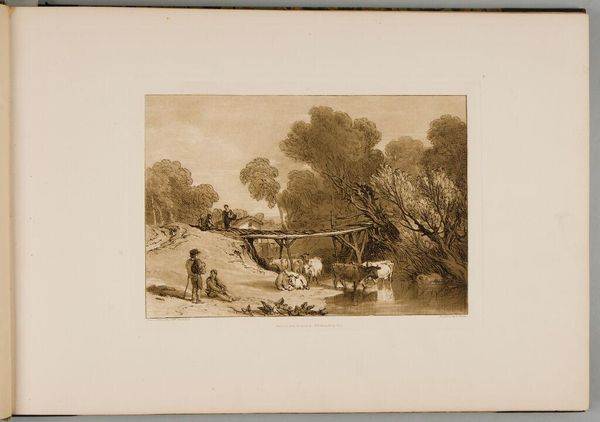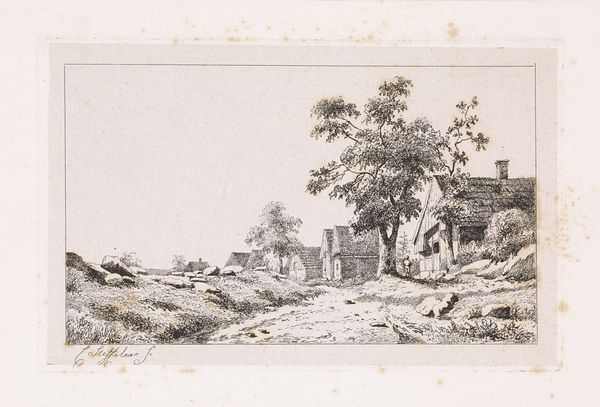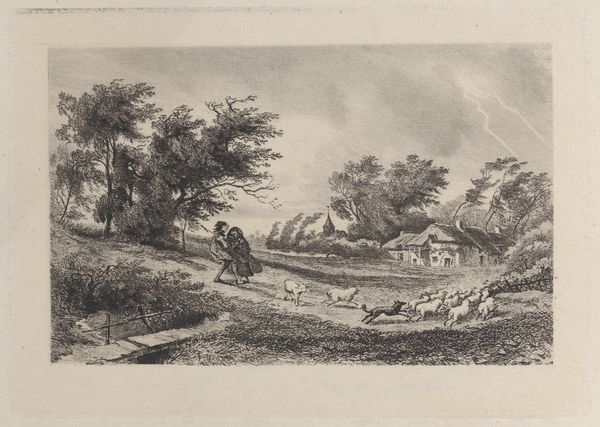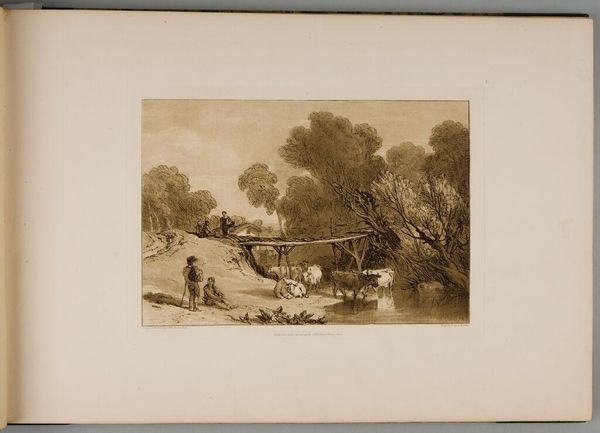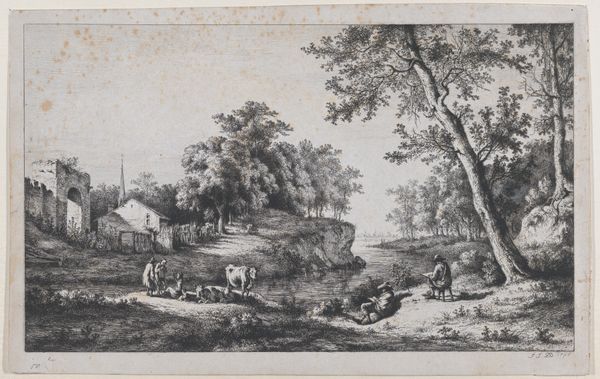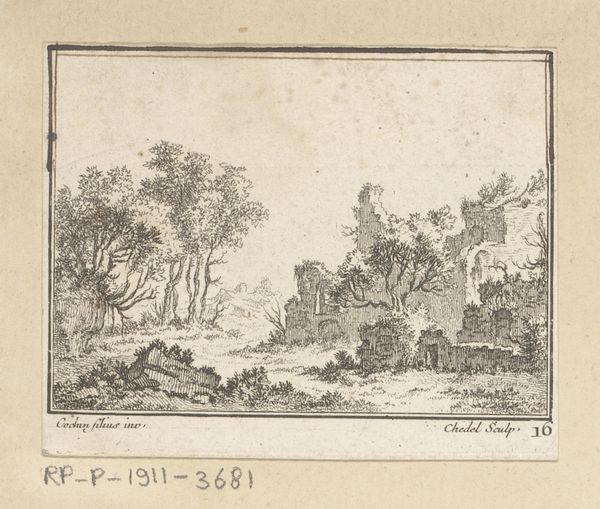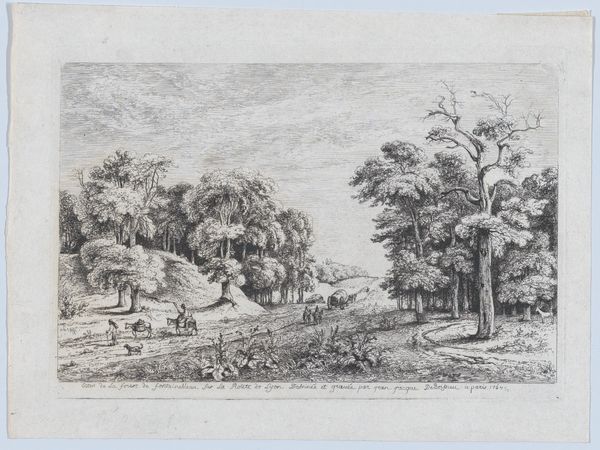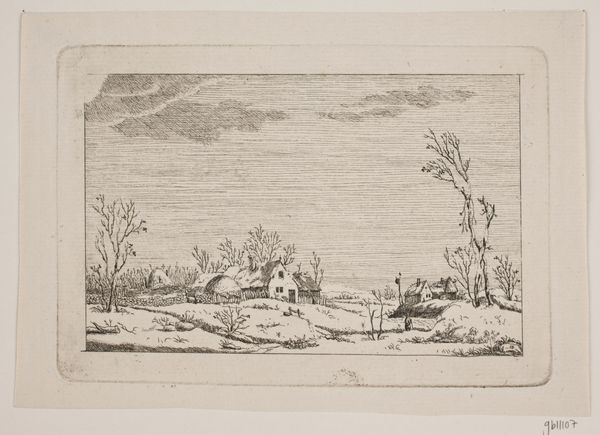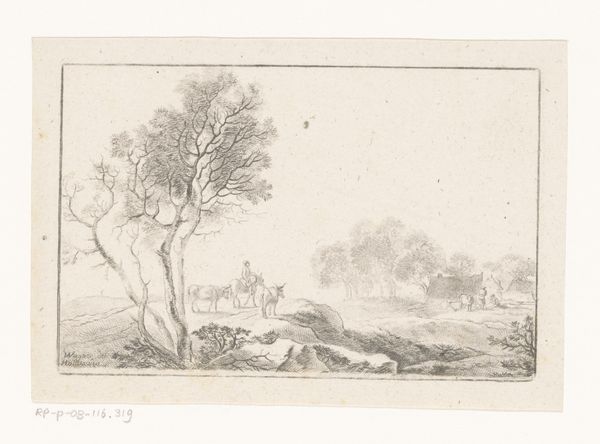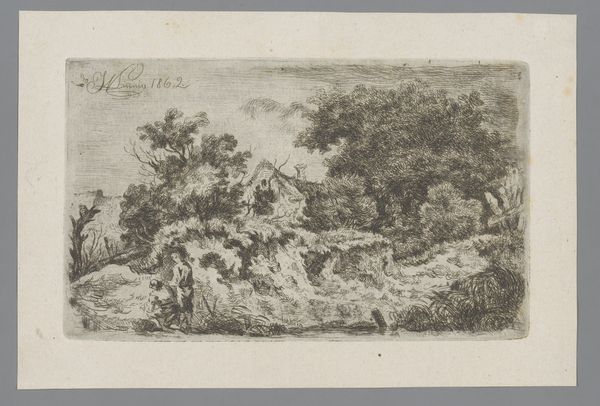
#
aged paper
#
toned paper
#
light pencil work
#
pencil sketch
#
old engraving style
#
personal sketchbook
#
sketchbook drawing
#
watercolour illustration
#
sketchbook art
#
watercolor
Dimensions: height 161 mm, width 254 mm
Copyright: Rijks Museum: Open Domain
Editor: This is "Children Playing at a Farm" by Jean-Baptiste Leprince, made in 1771. It's done with watercolor on toned paper, and you can find it here at the Rijksmuseum. It gives off a pastoral feeling, doesn't it? The children are a very clear, yet slightly unclear focal point of a larger commentary of simple life. What catches your eye in this piece? Curator: What I see is Leprince using the visual vocabulary of childhood, deeply ingrained in our collective memory, to subtly comment on innocence and labor. Observe how he juxtaposes the children's apparent play with the farm setting itself - a place of work. How do these visual cues contribute to the piece's narrative? Editor: So, the location in itself isn't random? The imagery creates the full picture here. Curator: Precisely. The farm isn't merely a backdrop, but it invokes centuries of association. This brings forth connotations of land, labor, and survival in rural life. Notice, also, the subdued color palette. Does it evoke specific emotions in you, connecting the image to a larger story beyond what is directly depicted? Editor: I suppose there's an overwhelming comfort in the simplicity that it provides. Maybe this comfort is contrasted to other artworks or even current periods of time. So, in this piece, color really sets the mood as an important vehicle, as it provides that subtle and clear message of contrast. Thank you! Curator: The genius of Leprince lies in his ability to activate these dormant cultural memories. The piece serves as a reminder of how visual symbols are so instrumental in defining the collective understanding of ourselves.
Comments
No comments
Be the first to comment and join the conversation on the ultimate creative platform.
